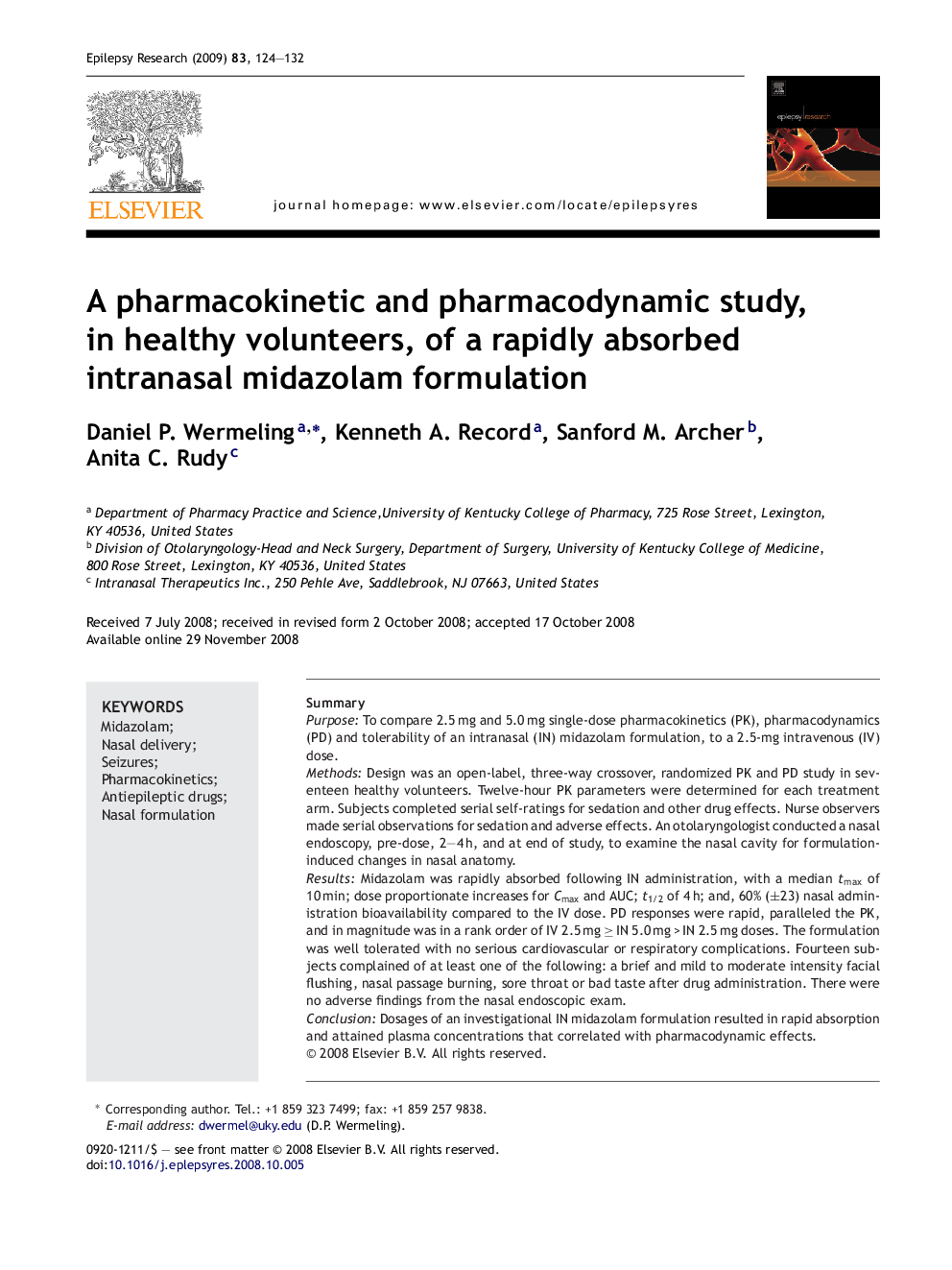| Article ID | Journal | Published Year | Pages | File Type |
|---|---|---|---|---|
| 3052690 | Epilepsy Research | 2009 | 9 Pages |
SummaryPurposeTo compare 2.5 mg and 5.0 mg single-dose pharmacokinetics (PK), pharmacodynamics (PD) and tolerability of an intranasal (IN) midazolam formulation, to a 2.5-mg intravenous (IV) dose.MethodsDesign was an open-label, three-way crossover, randomized PK and PD study in seventeen healthy volunteers. Twelve-hour PK parameters were determined for each treatment arm. Subjects completed serial self-ratings for sedation and other drug effects. Nurse observers made serial observations for sedation and adverse effects. An otolaryngologist conducted a nasal endoscopy, pre-dose, 2–4 h, and at end of study, to examine the nasal cavity for formulation-induced changes in nasal anatomy.ResultsMidazolam was rapidly absorbed following IN administration, with a median tmax of 10 min; dose proportionate increases for Cmax and AUC; t1/2 of 4 h; and, 60% (±23) nasal administration bioavailability compared to the IV dose. PD responses were rapid, paralleled the PK, and in magnitude was in a rank order of IV 2.5 mg ≥ IN 5.0 mg > IN 2.5 mg doses. The formulation was well tolerated with no serious cardiovascular or respiratory complications. Fourteen subjects complained of at least one of the following: a brief and mild to moderate intensity facial flushing, nasal passage burning, sore throat or bad taste after drug administration. There were no adverse findings from the nasal endoscopic exam.ConclusionDosages of an investigational IN midazolam formulation resulted in rapid absorption and attained plasma concentrations that correlated with pharmacodynamic effects.
